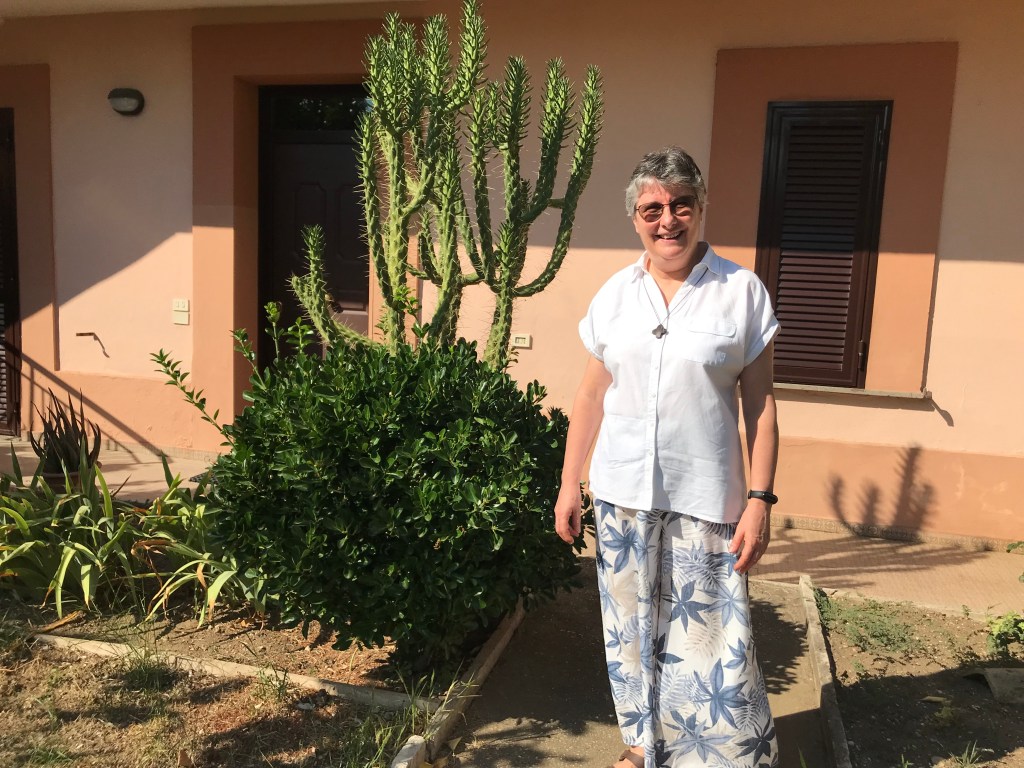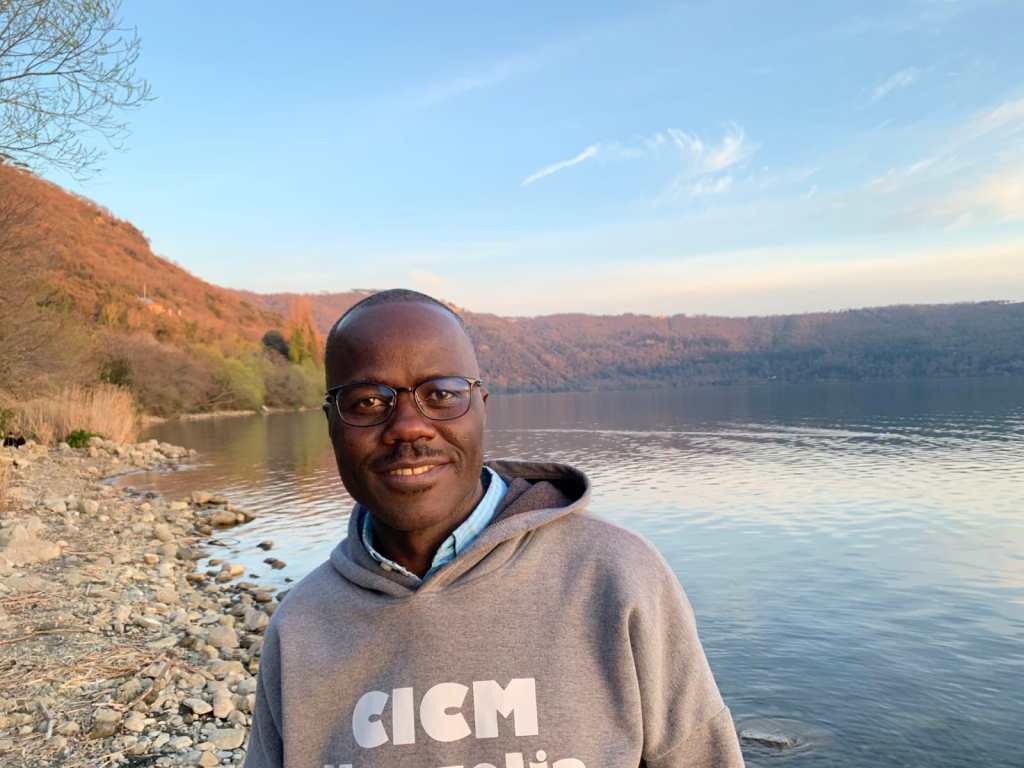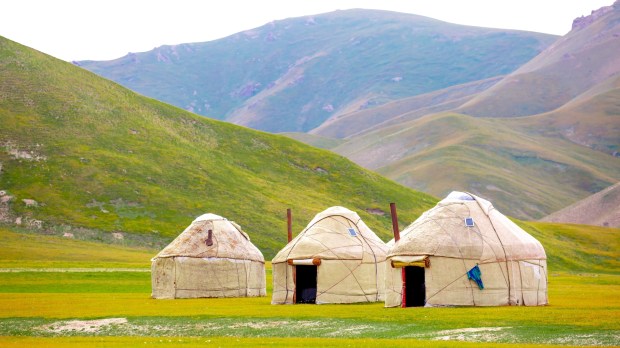In Mongolia, where Pope Francis will be visiting from August 31 to September 4, 2023, a handful of missionaries have given birth to a small Catholic community where, 30 years earlier, no Christians lived. Isolated and on the periphery of everything, these missionaries come from all over the world to proclaim the Good News by living as close as possible to the Mongolian people. We met two of them, who spoke of their vocation.
The Argentinian Pontiff’s visit to Mongolia is “a sign of hope for Mongolian Catholics, who can feel like a minority in their own country,” especially given the success of Protestantism, says Belgian Sister Lieve Stragier.

She’s the Superior General of the Congregation of the Immaculate Heart of Mary (ICM), and spent 15 years in Mongolia. “Even if they are small, even if their community is very young, many of these people have been baptized in recent years and are happy to know that they are taken into account and that they are part of the Catholic community,” she stresses.
Fr. Mathieu Ndjoek, a Cameroonian priest from the Congregation of the Immaculate Heart of Mary, lived in Mongolia for 10 years (2008-2018). He’s due to return there shortly, and he believes that the Pope’s visit will help to “make God’s love felt” by the entire Mongolian people. The Pontiff, he believes, will also be there to bring an “invaluable” message of support to Mongolia’s pastors.

In the footsteps of Fr. Verbist
Historically, Mongolia is a mission territory that owes much to the Catholic Church in Belgium. The presence of Belgian missionaries in this region was initiated in the second half of the 19th century by Fr. Théophile Verbist (1823-1868). In 1862, this priest from the Scheut district of Anderlecht, Belgium, decided to found the Congregation of the Immaculate Heart of Mary (CICM) — nicknamed the “Scheutists” — a congregation of secular missionary priests whose vocation was to travel to northern China.
Fr. Matthieu Ndjoek is a member of this religious family, which currently numbers 598. They are present in some 20 countries around the globe, including the DRC, Brazil, Mexico, and Indonesia. Born in Cameroon into a family practicing traditional religions, he recalls how contact with the Scheutist brothers in his village convinced him to become a Christian, and then to commit himself to the mission — taking him to Mongolia, to the origins of his order.
When they began in China, the first Scheutists were sent to the vicariate of “Tartary,” as the vast expanse to the northwest of China was then known. This gigantic ecclesiastical territory had been entrusted to Lazarist missionaries since the 17th century — for example, Fr. Évariste Huc (1813-1860), a famous adventurer who visited Tibet — but they needed reinforcements. Like the Lazarists, the Scheutists focused their mission on the vast territory of Inner Mongolia (a region in China) where Fr. Verbist died of typhus in 1868.
Following in his footsteps, 679 members of his order went on to evangelize China, despite the hostile climate. Between 1899 and 1901, during the Boxer Rebellion, many Scheutists died as martyrs in this difficult mission land.
At the beginning of the 20th century, the Scheutists present in China turned to Outer Mongolia — today’s Mongolia — and settled there, but too late. The Soviet revolution took hold of the country, which became a socialist, atheist republic in 1924 and banned the presence of missionaries. Belgian missionaries remained in Outer Mongolia until the Chinese revolution (1945-1949), during which time 11 missionaries were martyred, while all the others were expelled.
Pioneers of evangelization in Mongolia
In 1992, when the Communist regime fell, three Scheutist priests were asked to take over the work of their predecessors. One of them, Filipino priest Fr. Wenceslao Selga Padilla, became the first bishop of the Apostolic Prefecture of Ulaanbaatar in 2002. These pioneers were joined by disciples of another great Belgian missionary, Mother Marie-Louise de Meester (1857-1928). Three nuns from her congregation, the Missionary Sisters of the Immaculate Heart of Mary (506 members in 2022), also known as the “De Jacht” sisters — the name of their motherhouse near Leuven — arrived in Ulaanbaatar in 1995.
“I got off the plane and saw … nothing at all!” recalls Sr. Lieve Stragier, who was one of the three nuns, recalling the poor development of the country and its capital at the time. Mongolia was very poor at the time, and had just emerged from long years of atheism, but the nun remembers feeling immediately that “God had already been here.”
Mongolians “were looking for meaning, to replace something that had been taken away from them during the communist years,” explains Sr. Lieve. She recalls that in its early years, the mission was mainly there for expatriates. However, the latter “would come to Mass with their Mongolian driver,” and this Catholic presence soon aroused curiosity, particularly among the young. “There was a fascination with everything Western,” explains the Flemish nun.
Among the Mongolian people
In the early years, the missionaries waited until they had mastered the language, then set about finding out how they could serve the Mongolian people in their daily lives. “We had to learn to live as a community; that was our priority,” says Sr. Lieve.
So she looked after the street children who then lived in the drains of Ulaanbaatar, “the only place where it was warm in winter.” She worked in the country’s first center for mentally handicapped children and opened a community center on the outskirts of the capital.
Around these activities, moments of evangelization were born, notably during “Bible sharing” sessions, “very practical” exchanges organized for adults around biblical texts. Little by little, the little community grew. Sr. Lieve Strieger remembers with particular tenderness the day when, for the Christmas pageant, the baby Jesus doll was replaced for the first time by a Mongolian boy, the child of a couple of converts.
Fr. Mathieu Ndjoek, who lived in Mongolia from 2008 to 2018, was mainly responsible for the center for abandoned children in Ulaanbaatar founded by his Scheutist predecessors in 1995. Although he had to face some difficult moments, such as prejudice about his African origins, he was sensitive to the “great sense of welcome of Mongolians,” especially outside the cities.
Like Sr. Lieve Stragier, the Cameroonian priest says that the mission is “not progressing as we would have wished.” However, he believes that there are many positive signs in this very small community. Not least of these, he notes, is the fact that “Fr. Giorgio” — Giorgio Marengo, an Italian priest among the missionaries in Mongolia — surprisingly became the country’s first cardinal in 2022.
Missionaries in Mongolia
Male orders
- The Scheutists (CICM)
- The Consolata Missionaries
- Salesians
Female orders
- Missionaries of Charity
- Missionary Sisters of the Immaculate Heart of Mary (ICM)
- Sisters of Saint Paul de Chartres
- Missionary Sisters of the Consolata
- Salesians (Mary Help of Christians)
- Congregation of Charity of the Blessed Sacrament (South Korea)
Others
• Fidei donum priests
• ProMisja (Polish laity)



